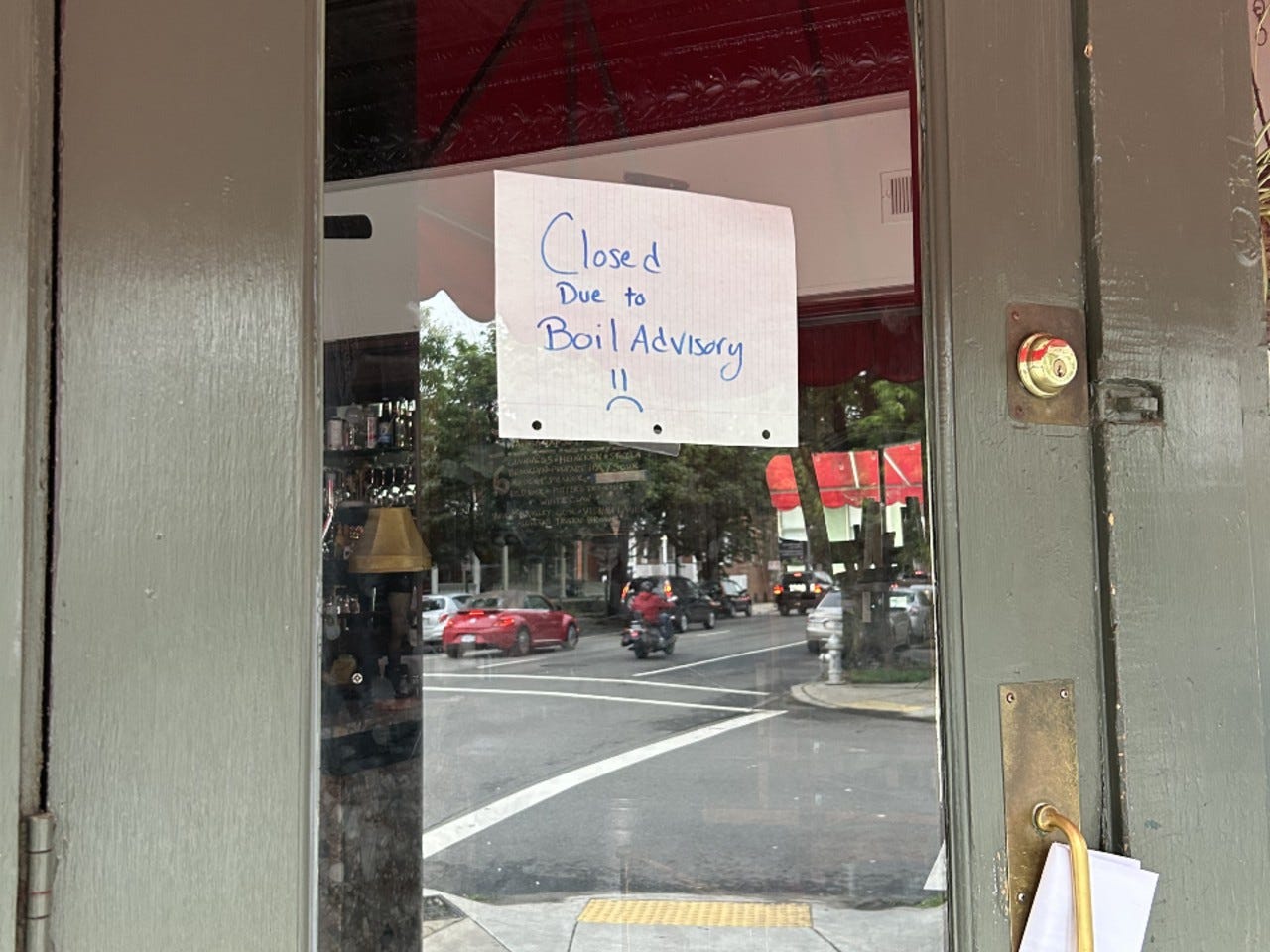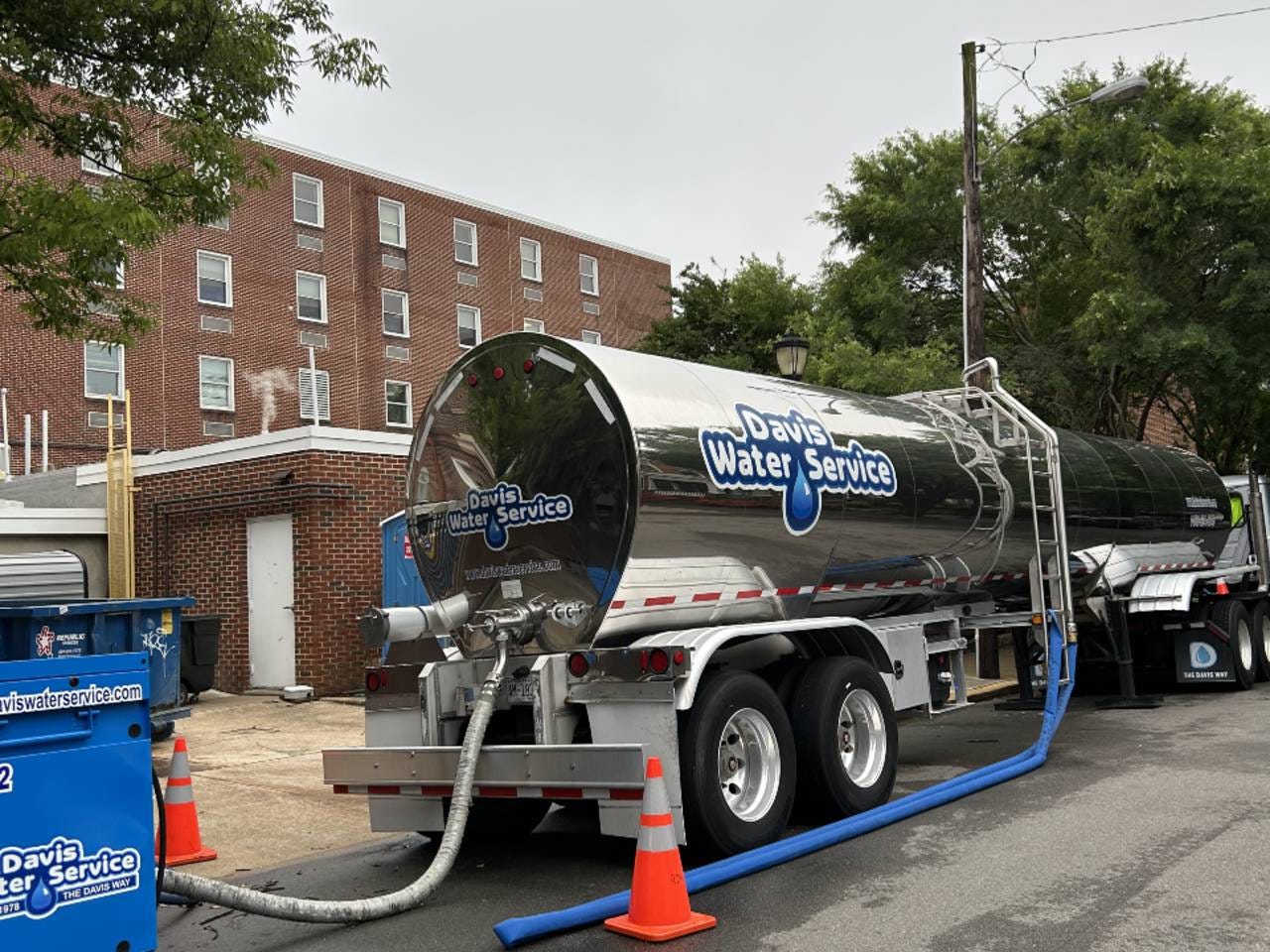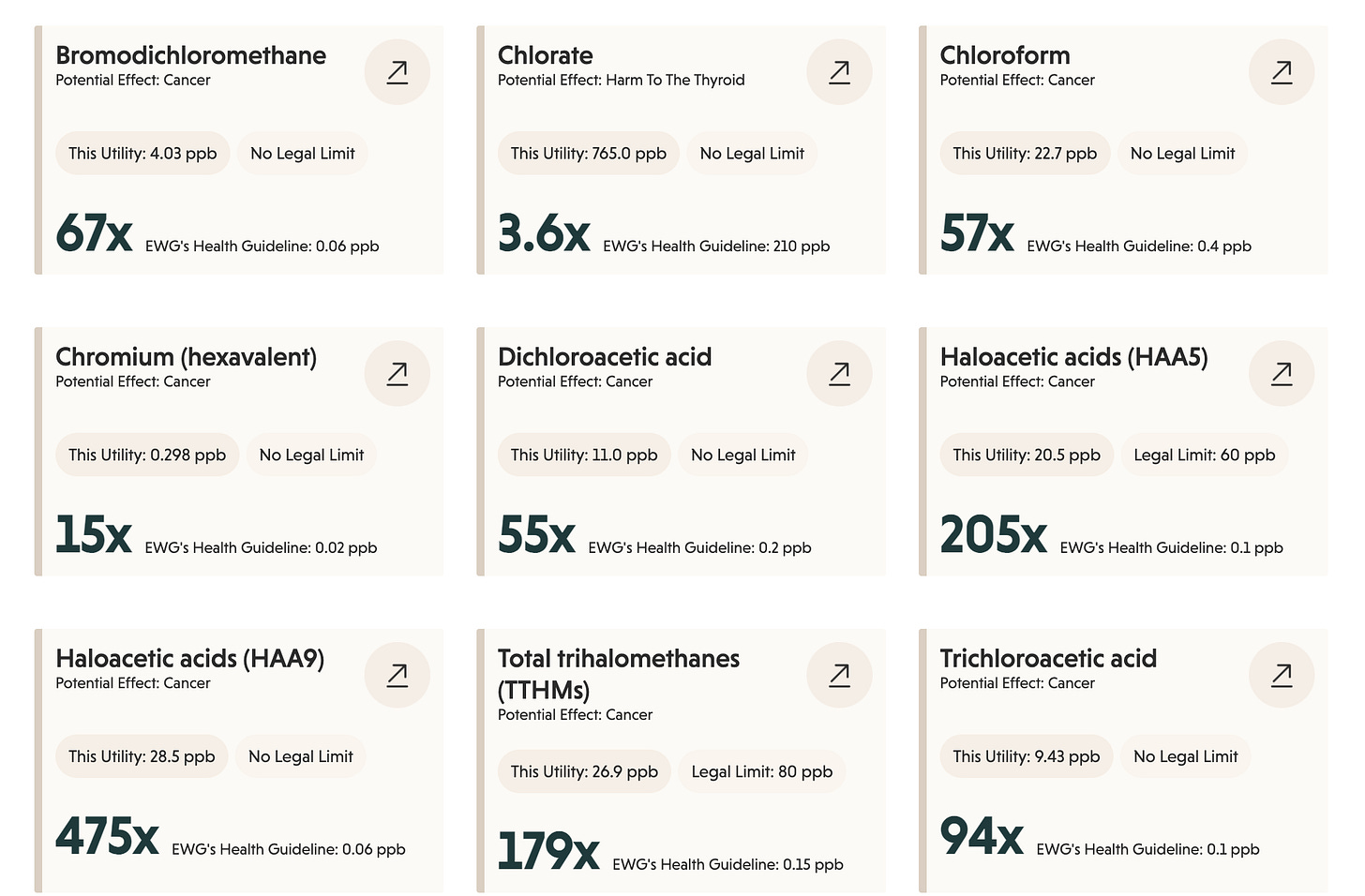Call It A Crisis, Again.
A Water Hiccup Turned Into A Water Crisis in Richmond, VA. Learn What Went Wrong & How Can The City & Other Places Can Prevent Future Problem.
Richmond, Virginia, made national news last week for another water crisis.
Last Tuesday, city officials issued a boil water advisory for large parts of the state’s capital city, leaving tens of thousands of residents without drinkable tap water following operational issues or as the city called it “an operational hiccup” at the city’s water treatment plant for the second time this year.
This incident comes on the heels of one in January that lasted nearly a week, when about 230,000 Richmond residents were without drinkable tap water after a power failure at the plant caused a malfunction at the water treatment facility.
The Virginia Department of Health (VDH) released a final report on the January water crisis calling it “completely avoidable,” identifying significant operational, procedural, and infrastructure failures that contributed to several days without reliable water service.
“VDH’s investigation found this crisis could have been prevented with better operational decisions,” State Health Commissioner Dr. Karen Shelton said in a statement. “Our goal now is to ensure corrective actions are taken swiftly and effectively, so Richmond-area families can trust their water supply.”
That’s in addition to another malfunction at the same water plant in April which led to a spike in fluoride levels, which residents learned about after the fact.
Fool me once, shame on you; fool me twice (or more), shame on me…
This proverb rings true for so many communities across the country. When a community gets hit multiple times with preventable water crises in the same year, it begs some serious questions:
Why is it so hard for utilities to provide clean water?
Are those in charge of water treatment learning from their mistakes and are they held accountable after a crisis?
Last week, we talked in our LIVE Substack session about exactly why it’s so hard to provide clean water these days. It’s a multitude of factors that include the age of water operators (many are retiring and leaving behind years of expertise), the age of water systems (most water treatment systems in this country are old/aging infrastructure), most cities have higher demand for water (population growth causes strain on antiquated systems), water treatment is tricky (each water source is unique and requires different strategies throughout the year), and on and on.
Advisories are a necessary health step during a water crisis, but they also cause headaches and chaos not just for homeowners and renters but also for local businesses, restaurants, schools, child-care facilities, assisted-living facilities, hospitals, and more.
The city was not prepared for winter storms, and the VDH called attention in its report to poor maintenance, which included not properly maintaining backup batteries despite known flood risks and led to the major outage and advisory in January.
Virginia's top drinking water official called last week’s issue in Richmond “unprecedented.”
“I will emphasize that this is unacceptable," said Dwayne Roadcap, the director of the Virginia Department of Health's (VDH) Office of Drinking Water told CBS6 News. “There's a lot of frustration and anger, rightfully so, about this incident. We share that from the Virginia Department of Health.”
The May advisory points to this sadly common issue at the water treatment plant—they can’t control their dirt. That’s a trihalomethane (THM) issue.
In water treatment, dirt goes by many names but “organic matter” or “turbidity” are the most common.
Many factors can contribute to water issues, including not maintaining or upgrading the water system, but that’s also what leads to a buildup of naturally occurring organic matter in the water, even when chlorine is the primary disinfectant.
Specifically, officials in Richmond said “high turbidity” in the water caused filters to clog, temporarily decreasing water production, and that can lead to increased THM levels. THMs are a group of chemical compounds also referred to as disinfection byproducts (DBPs) that can cause health problems for people.
Let’s break that down.
Water sources like lakes, rivers, streams, and tributaries naturally contain large amounts of organic matter aka “dirt.” When water treatment plants add chlorine to water supplies, the chemical interacts with that organic matter, which creates THMs.
Today, we have more than a thousand cities with unsafe levels of total THMs (TTHMs) in their water.
TTHMs is when four distinct chemicals, chloroform, bromodichloromethane, dibromochloromethane, and bromoform, are present.
Any imbalance of THMs means the system is out of balance. These compounds occur when organic matter in the water reacts with chlorine, so essentially the system is not being chlorinated properly, meaning you have too much or not enough.
But many cities don’t get to the root of the problem by finding the source of the organic matter. When you know what’s in the water, you can treat it more effectively instead of creating a chemical cocktail mix.
In the last 40 years, scientists have discovered more than 600 other DBPs in chlorinated tap water, including haloacetic acids (HAAs). As you can imagine, the water has only become more polluted (with both organics and inorganics), creating more treatment headaches and violations.
The tap water in Richmond contains trihalomethanes. You can see this by typing in your zip code here: EWG Tap Water Database
While the City of Richmond's levels are within the EPA's allowance, they exceed the Environmental Working Group's (EWG) recommendation.
Here are the numbers for the City of Richmond (and these numbers are from before the incidents from this year, which indicates ongoing issues).
This is exactly what it looks like for a water utility to be in compliance with EPA regulations but providing water that is 179 times greater than health recommendations (see total trihalomethanes above).
Safe to drink? You decide.
People are exposed to trihalomethanes by consuming drinking water that contains these chemicals and by breathing them in via water vapors, such as when you take a hot shower.
The health impacts of exposure to THMs can be a bit sneaky, as they develop slowly over time, but research shows that long-term exposure to trihalomethanes has been linked to many serious conditions, including:
increased risk for various cancers, including bladder and colon cancer
pregnancy problems, birth defects in infant children, and low birth weights
damage to the heart, lungs, kidney, liver, and central nervous system
These serious issues are why THMs are regulated by the EPA, which has set a maximum contaminant level (MCL) for THMs, as well as a total MCL for all THMs combined.
But… a 2025 study suggests those current standards may fail to protect against cancer in the general population.
Other extreme weather events, such as heavy rainfall and flooding can also impact water pollution levels and create excess turbidity. These events lead to a surge in surface runoff, which carries visible debris, dissolved chemicals, pathogens, and excess nutrients into aquatic ecosystems.
Public water systems are the primary source of safe drinking water for many communities throughout the country. Water plays an essential role in our daily lives, which is why it’s critical to implement stronger preventative measures and basic maintenance of water treatment systems. Ignoring routine maintenance at the water treatment plant is not okay.
Richmond is hardly alone in these issues. First, the water treatment plant was built on the banks of the James River in 1924. Like many systems across the country, it’s more than 100 years old.
Richmond's Department of Public Utilities' (DPU) water plant can produce up to 132 million gallons per day, providing water to Henrico, Chesterfield, Hanover, Goochland, and Powhatan counties. It’s an old system that also supplies more people than ever before.
Other states with TTHM problems include: California, Texas, Florida, New York, Illinois, Pennsylvania, Ohio, Georgia, North Carolina, and New Jersey.
We encourage you to look up your zip code and see if any THMs are in your water. Both carbon filters and reverse osmosis filters can offer a level of protection at home. But the real issue is in understanding water utilities are struggling to provide clean water to the people and lending a helping hand.
Don’t assume your agencies are doing the right thing. For the reasons we’ve outlined above, many can’t control the dirt in their system.
What needs to change? We do. When people show up, that’s when the change happens. Talk to your elected officials and let them know why this issue is important. Work with non-profits in your area or start your own work group to help your city get on track. These problems don’t go away on their own. They require consistent action and follow-up.
Trihalomethane Help Checklist
Optimizing Disinfection Processes: This approach focuses on minimizing the formation of THMs during the disinfection process. For example, using ozone or ultraviolet (UV) light as a pre-disinfectant before chlorination can help minimize THM formation. Ozone is a powerful oxidant that can help break down organic matter, thus reducing the precursors available for THM formation. UV radiation, on the other hand, inactivates microorganisms without producing chemical byproducts.
Enhanced Coagulation and Filtration: This process involves using chemicals (coagulants) to clump together organic matter and other particles in the water, which can then be removed by sedimentation and filtration. By removing more organic matter before disinfection, the potential for THM formation is reduced. Specialized filters, like granular activated carbon (GAC) filters, are also highly effective in removing organic matter and some THMs after they have formed.
Check on Your Water Operators: Certified operators are a critical part of providing an adequate and safe supply of water. Operators are typically responsible for a variety of tasks centered around operating and maintaining a system or plant. They typically work in a selection of capacities: water treatment, distribution, water collection, or wastewater. Do they have the highest level of certification? Do they need additional trainings?
Have other ideas for how cities can get their dirt under control? Let us know in the comments below.






Nearly 3 years ago Joe Biden signed the Camp LeJeune Justice Act. Over 400,000 Marines, their families and support staff filed suit. To date there have only been about 400 settlements. They are waiting for us to die. For over 35 years the water supply on Camp LeJeune was poisoned by chemicals from a dry cleaning company. When the Marine Corp learned about it they did NOTHING. For 35 years Marines, their families, and civilian people working on base were subject to this poison. Many of us have suffered cancers and others debilitating diseases that can be directly be traced back to the tainted water. It is about time the DOJ and the Marine Corp take care of their people! We have waited long enough.